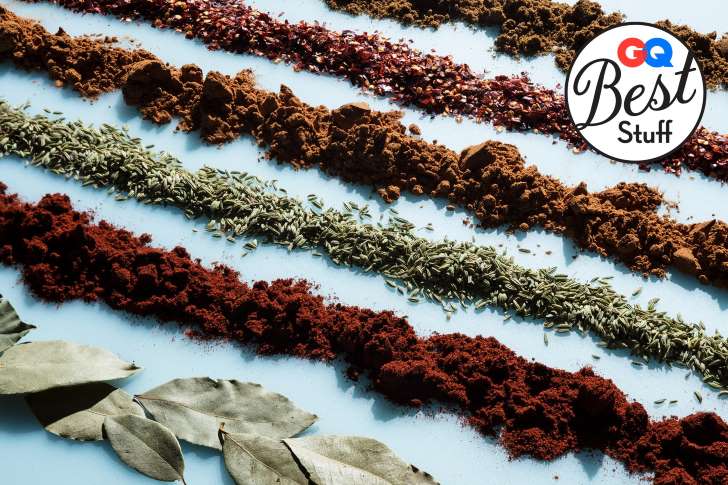Go check out the part of your kitchen where you might keep things we like to call “spices”. You’ve got salt. You’ve got pepper. What else do you have? More importantly: What else do you need?
Whether you’ve just moved to a new place or your pantry is just looking a little sad lately, you need about eight spices in order to make a solid range of flavorful food that doesn’t just taste like “soy sauce” or “Tabasco” or “salt with some pepper on it.” Between them, you can make a number of dishes, sample a wide swath of global cuisines, and just lead a spicier life in general. This is by no means a comprehensive list, but it will definitely get you started.
Cumin
I use cumin more than just about anything other than salt and pepper. Cumin is used in a whole mess of foods around the world: from India to China to Mexico to Morocco, everybody loves cumin!! It has an earthy, peppery flavor and it comes as whole seeds (great for toasting as the base of a curry) or ground into a powder (great for adding to basically anything). Use it with chili, taco fillings, curries, grilled meats, wherever. Cumin is super flexible and great on just about anything savory, but it does have a very distinctive flavor, so don’t go overboard.
Cinnamon
C’mon, it’s cinnamon. You know cinnamon. It’s cozy, it’s warm, it’s an integral component of the pumpkin spiced universe. Obviously good for baking and all things oatmeal-related, but also nice in savory dishes. Try a pinch in chili or bolognese, in anything with beef or lamb, or even in cold weather cocktails. Buy the sticks if you want to make your own syrups or pickles; if you just want some cinnamon, buy the ground stuff.
Chili Flakes
If I’m looking to spice up just about anything, my choice is dried red chili flakes. Cayenne can be great, but it can also be unpredictable. I find it’s easier to control the spice level with flakes. I keep a small jar of them next to my stove, and sprinkle them in whenever I saute vegetables. You have to be careful not to burn red chili flakes in hot oil, but otherwise go nuts. Also good on pizza, but you knew that already.
Dried Oregano
I prefer most herbs fresh. And while fresh oregano is lovely—try using the leaves in scrambled eggs!—dried oregano will always have a place on my shelf. It’s great in soups, stews, sauces, marinades and pasta—especially baked pastas. Don’t keep this one around forever, as the dried leaves can go stale and will just make everything taste kind of dusty. But it’s versatile enough that hopefully you’ll use it up pretty quick.
Smoked Paprika
Sweet or spicy, paprika has great flavor. But that’s not why you’re using smoked paprika, which primarily tastes…like smoke. Which makes it a great addition to anything you want to taste smokey without adding spice (if you want smoky spice, use chipotle powder). Use it to add smoke—and a snazzy brick red color—to everything. Everything! This is also a place where buying the good stuff—try a Spanish paprika—is worth it, and not even that expensive.
Bay Leaves
Bay leaves are kind of mysterious: tons of recipes call for them during cooking, but you remove them before you eat. What do bay leaves…do, exactly? And what do they actually taste like? The dried leaves of bay laurel trees add a floral, almost bitter taste (sort of like thyme) to stocks, stews, and anything else you plan on cooking for a long time. They’re strongly flavored, so they’ll leave their taste behind when you remove them—but they are not fun to digest, so you don’t want to leave them in.
Chili Powder
Where chili flakes add spice, chili powder adds spice and earthy depth. I primarily use chili powder in things that are going to cook for awhile, or in rubs for grilling. The fun thing about chili powder is that there are a ton of varieties you can play with: there are single variety chile powders, like ancho, guajillo, anaheim, even jalapeño. But there are also tons of blends available. Be careful when purchasing a chili powder blend, as some of them contain salt. Which is fine! You just need to know, so you don’t over-salt your food.
Fennel
Fennel is not for everyone. People usually describe it as licorice flavored, but I personally believe it’s more accurate to call it pepperoni flavored. Either way, fennel comes powdered and in whole seeds, and, much like cumin, is used all over the world to add a nice thumping, herbal base note to everything from soups to meat to cookies (yes!). You can also buy fennel pollen, which is ludicrously expensive but lord does it taste good on roast chicken.












